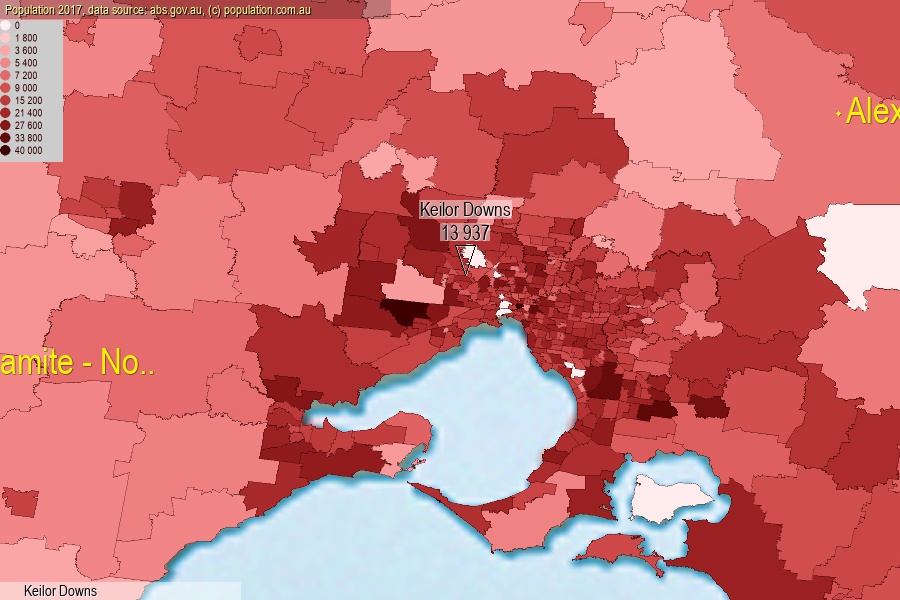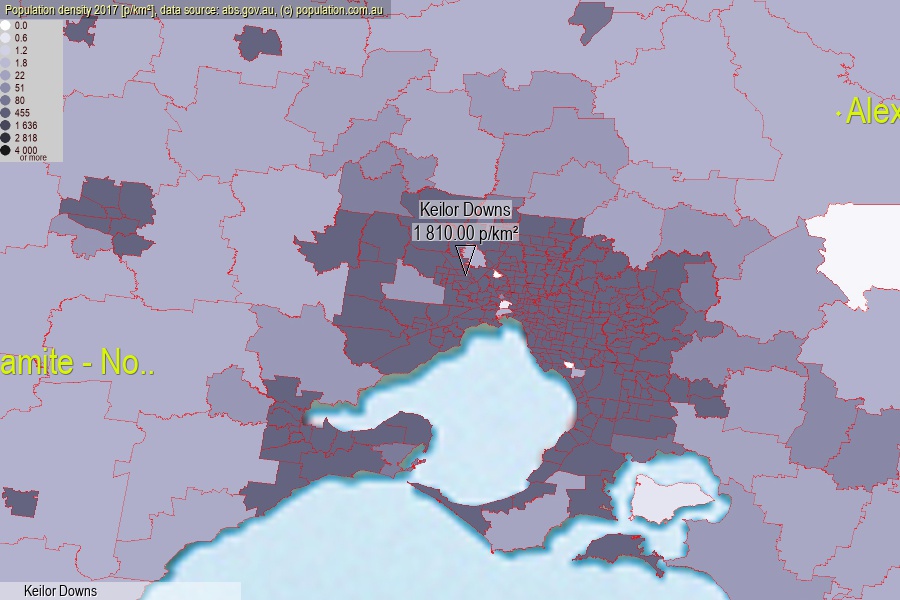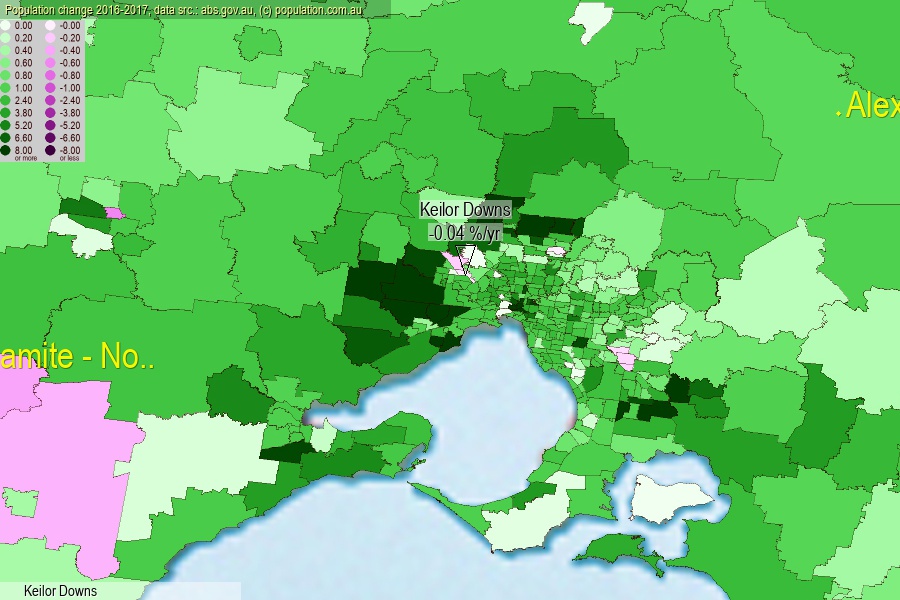 population.com.au
population.com.auLast official estimated population of Keilor Downs (as Statistical Area Level 2) was 13 937 people (on 2017-06-30)[2]. This was 0.06% of total Australian population and 0.217% of VIC population. Area of Keilor Downs is 7.70 km², in this year population density was 1 810.00 p/km² . If population growth rate would be same as in period 2016-2017 (-0.04%/yr), Keilor Downs population in 2025 would be 13 889. [0]



Click to enlarge. Keilor Downs is located in the center of the images.
Population [people], population density [p./km²] and population change [%/year] [2]
View borders » (new window) [4]
[1991-1992] +4.05 %/Yr.
[1992-1993] +2.40 %/Yr.
[1993-1994] +1.64 %/Yr.
[1994-1995] +1.40 %/Yr.
[1995-1996] +0.86 %/Yr.
[1996-1997] -0.20 %/Yr.
[1997-1998] -0.40 %/Yr.
[1998-1999] -0.28 %/Yr.
[1999-2000] -0.66 %/Yr.
[2000-2001] -0.59 %/Yr.
[2001-2002] -0.70 %/Yr.
[2002-2003] -1.02 %/Yr.
[2003-2004] -1.30 %/Yr.
[2004-2005] -1.12 %/Yr.
[2005-2006] -1.05 %/Yr.
[2006-2007] -0.94 %/Yr.
[2007-2008] -0.49 %/Yr.
[2008-2009] -0.38 %/Yr.
[2009-2010] -0.34 %/Yr.
[2010-2011] -0.28 %/Yr.
[2011-2012] -0.44 %/Yr.
[2012-2013] -0.42 %/Yr.
[2013-2014] -0.40 %/Yr.
[2014-2015] -0.39 %/Yr.
[2015-2016] -0.12 %/Yr.
[2016-2017] -0.04 %/Yr.
[0] Calculated with linear interpolation from officially estimated population
[1] Read more about SA2 and Australian Statistical Geography Standard (ASGS) on abs.gov.au
[2] Population data from Australian Bureau of Statistics (Population and density: 2017; change: 2016-2017)
[3] Digital Boundaries: Australian Statistical Geography Standard (ASGS) 2016.
[4] Border coordinates are simplifyed using Ramer-Douglas-Peucker algorithm.